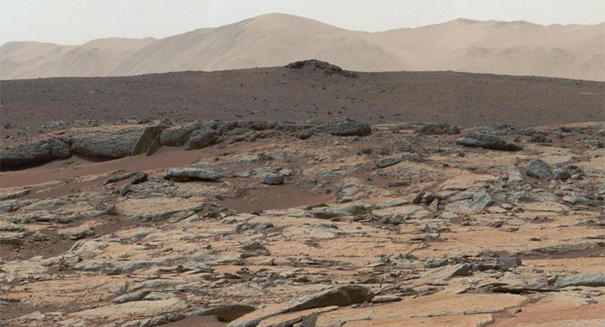
An ancient lake may have once held life.
Over the last couple months, the NASA Curiosity rover researchers had been hard at documenting through the rover’s measurements what remained of Mars’ atmosphere, including trying to find answers to the surprising lack of methane. Now, scientists are shifting the rover’s focus toward land, where Curiosity will hunt for signs of organic matter that might once have supported life on Mars.
NASA’s findings on Mars support six different scientific papers all published in the online edition of the journal Science. The information in these papers supported two important claims: there are signs that Mars could have once supported life, and, if it did, there are clues to finding out where Curiosity should hunt for those signs.
The scientists have not been having an easy time with this hunt. “The radiation has so much energy that it breaks apart the chemical bonds,” said Jennifer Eigenbrode, co-presenter of Curiosity’s most recent findings at the American Geophysical Union’s fall meeting on Monday. “It forms radicals and reacts with anything they can as quickly as they can. Understanding the chemistry is important to hypothesize what the story could have been [on Mars].”
In order to find any organic material, Curiosity will have to scope out land newly exposed to the surface. “We need to look for a site that was recently eroded, like the site exposed by a fresh crater,” Paul Mahaffy, a research scientist at NASA, said to ABC News. “If we were to find an area exposed for only 1 million years, we’d be happy, since there’s a much better chance of preserving the original organic material.”
NASA scientists believe that knowing Mars’ geology will make finding the organic material easier. The research so far suggests the material most likely exists somewhere on the bases of downwind, scarps, which is a specific type of cliff. Mahaffy believes that by combining the geological data with the radiation data, the scientists will have a better idea of where Curiosity will find the data.
Finding those sites means more than confirming a hypothesis made by NASA scientists several months ago of Mars once supporting life. “We kind of knew that already,” said Mahaffy. He sees the real appeal of finding those sites is being able to confirm that radioactive dating methods that are commonly used on Earth also work on other planets.
“We have a powerful technique for understanding the environment,” he said. “We have three independent measurements and they’re all close together. It’s extremely reassuring since we can say, ‘We must be doing something right.'”
Leave a Reply